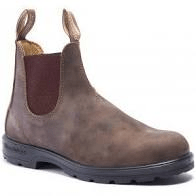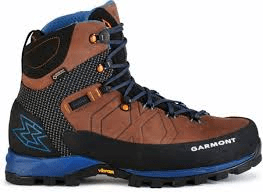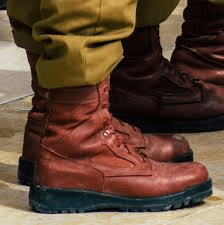They say a person’s fashion choices say a lot about their character and interests – and Israelis are no exception. Because those Shoresh sandals and Blundstone boots you see so many people wearing are perfect for exploring the great outdoors (and making a fashion statement along the way).
We’ve broken down the Israeli footwear scene and are here to explain it all:
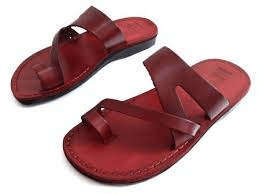
Camel Sandals
These classic leather camel sandals mimic the style of footwear worn by biblical people in the Holy Land over 2,000 years old! Never has a piece of fashion seemed so timeless. While many visitors to Israel take a pair back home with them, it is also common to see locals opting for camel sandals as well – largely in part because they are so compatible with the Middle Eastern climate. Whether you’re strolling around Jerusalem or even attending an event, you’re sure to see at least a handful of people in these sandals.
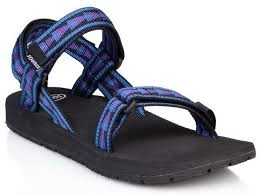
Shoresh Sandals
Without a doubt, Israel’s national pastime is hiking, and rightly so. Israel’s National Trail (INT) covers over 680 miles from the northernmost tip of Israel down to Eilat. But in order to cover this terrain, you need a pair of durable and waterproof sandals. Shoresh sandals are just that and enjoyed by kids to adults. Interestingly, you will also see Shoresh sandals worn casually around Tel Aviv and in the fields of kibbutzim. Shoresh sandals are versatile and comfortable – the perfect type of Israeli footwear.
Blundstone Boots
As the seasons change and the temperature drops, most Israelis will switch out their Shoresh sandals for their Blundstone boots. Equally as durable, these classic boots can take you comfortably across stretches of the Israel National Trail. Yet at the same time, you’ll see these boots worn in a laid back way in the most surprising places – at work and even at weddings! Even though these boots are Australian, they have left quite a cultural footprint in Israel (no pun intended). Blundstones, in all their ruggedness, have truly become synonymous with Israeli culture.
Mountaineering Boots
We’re talking serious business when it comes to these types of hiking boots. Because as much as Israelis love to casually hit the trails, a significant percentage of Israeli are serious hikers who are keen to cover every intense and geographically diverse mile of the country. This is where mountaineering boots become a necessity. These boots are seen less in metropolises and more frequently on the trails. You can also see these boots in the fields as well, as many farmers and kibbutzniks (people who live on kibbutzim) will also opt for a pair of these boots because they can truly withstand the elements.
Red Army Boots
All right, let’s talk army boots. Specifically, we’re going to break down the difference between red army boots and black army boots. While the vast majority of soldiers wear black boots, seeing a soldier in red boots is a tell-tale sign that they are a paratrooper. While many dream of becoming a paratrooper, only a small percentage actually achieve this dream, due to the rigorous training and intense qualifications. So, while every other soldier wears black boots, paratroopers wear red to signify their status.
Yalla, pack your footwear of choice and join us in Israel!
These classic Israeli sandals and boots are true testaments to the ‘wandering Jew’ persona many Israelis seem to embody. Israelis are adventurous and eager to explore their geographically diverse country. But more than anything else, they want to share their country with you.
Whether it’s covering exquisite stretches of the INT or exploring urban Tel Aviv by foot, Via Sabra’s tour guides skillfully uncover some of Israel’s best kept secrets. As we like to say, our guides are a combination of passionate storytellers and historians. Overland across Israel and experience the best that this incredible country has to offer with us.



